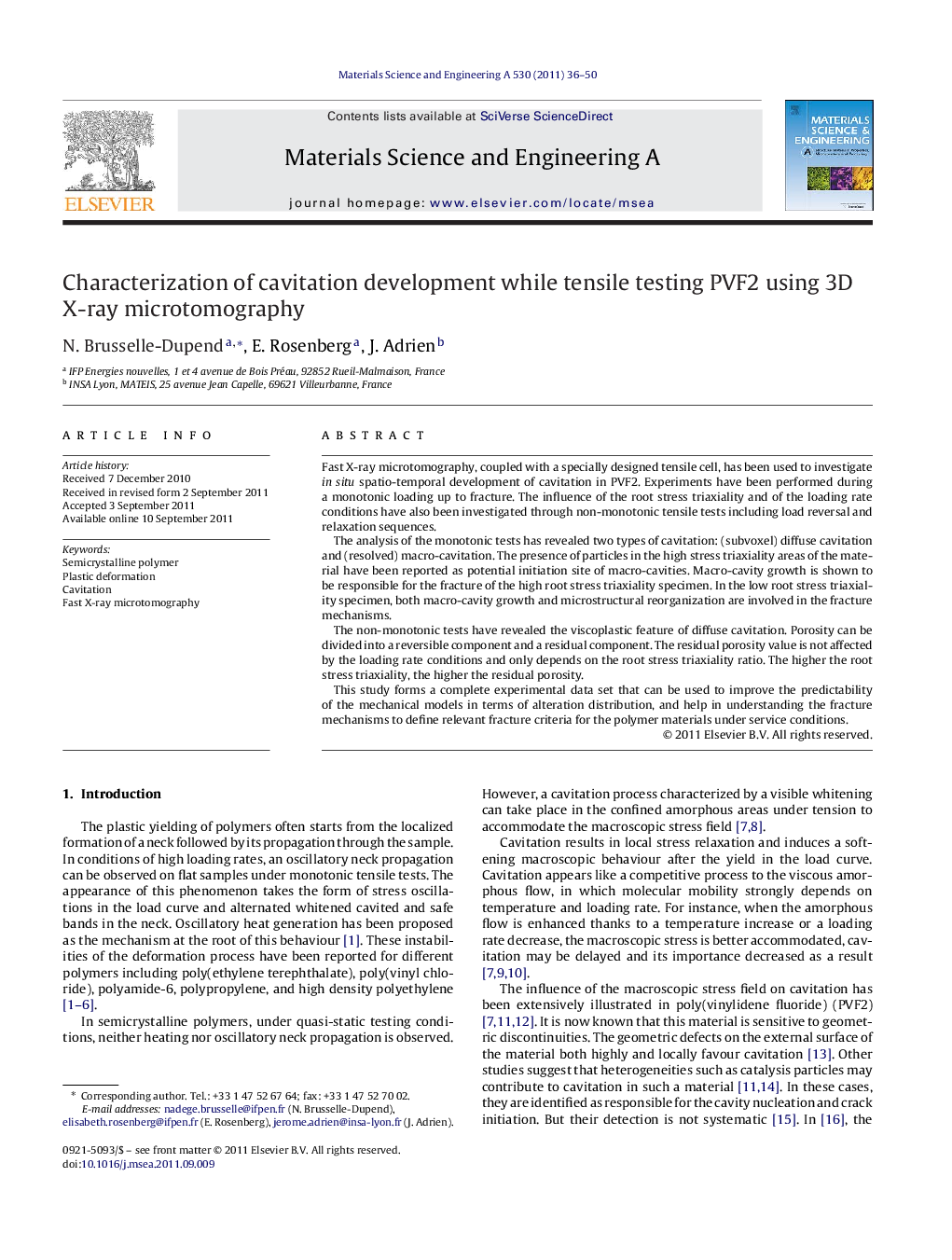| Article ID | Journal | Published Year | Pages | File Type |
|---|---|---|---|---|
| 1577960 | Materials Science and Engineering: A | 2011 | 15 Pages |
Fast X-ray microtomography, coupled with a specially designed tensile cell, has been used to investigate in situ spatio-temporal development of cavitation in PVF2. Experiments have been performed during a monotonic loading up to fracture. The influence of the root stress triaxiality and of the loading rate conditions have also been investigated through non-monotonic tensile tests including load reversal and relaxation sequences.The analysis of the monotonic tests has revealed two types of cavitation: (subvoxel) diffuse cavitation and (resolved) macro-cavitation. The presence of particles in the high stress triaxiality areas of the material have been reported as potential initiation site of macro-cavities. Macro-cavity growth is shown to be responsible for the fracture of the high root stress triaxiality specimen. In the low root stress triaxiality specimen, both macro-cavity growth and microstructural reorganization are involved in the fracture mechanisms.The non-monotonic tests have revealed the viscoplastic feature of diffuse cavitation. Porosity can be divided into a reversible component and a residual component. The residual porosity value is not affected by the loading rate conditions and only depends on the root stress triaxiality ratio. The higher the root stress triaxiality, the higher the residual porosity.This study forms a complete experimental data set that can be used to improve the predictability of the mechanical models in terms of alteration distribution, and help in understanding the fracture mechanisms to define relevant fracture criteria for the polymer materials under service conditions.
► Fast in situ X-ray microtomographic analyses while tensile testing PVF2. ► Highlight of two kinds of cavitation: diffuse cavitation and macro-cavitation. ► Porosity can be divided into a reversible component and a residual component. ► Influence of the root stress triaxiality ratio on the residual void fraction. ► Influence of the stress triaxiality ratio on fracture occurrence.
